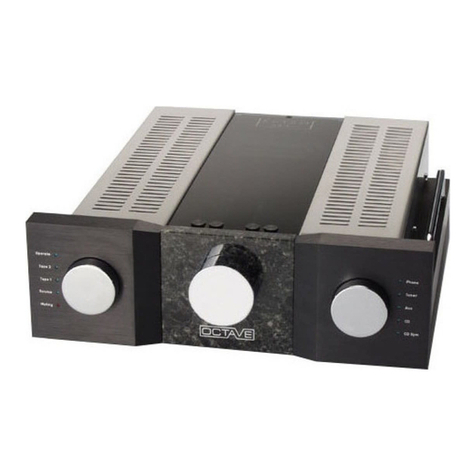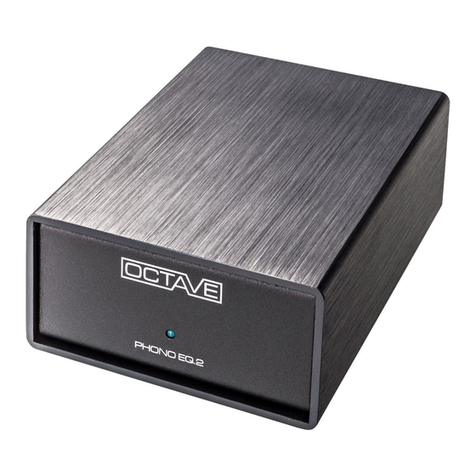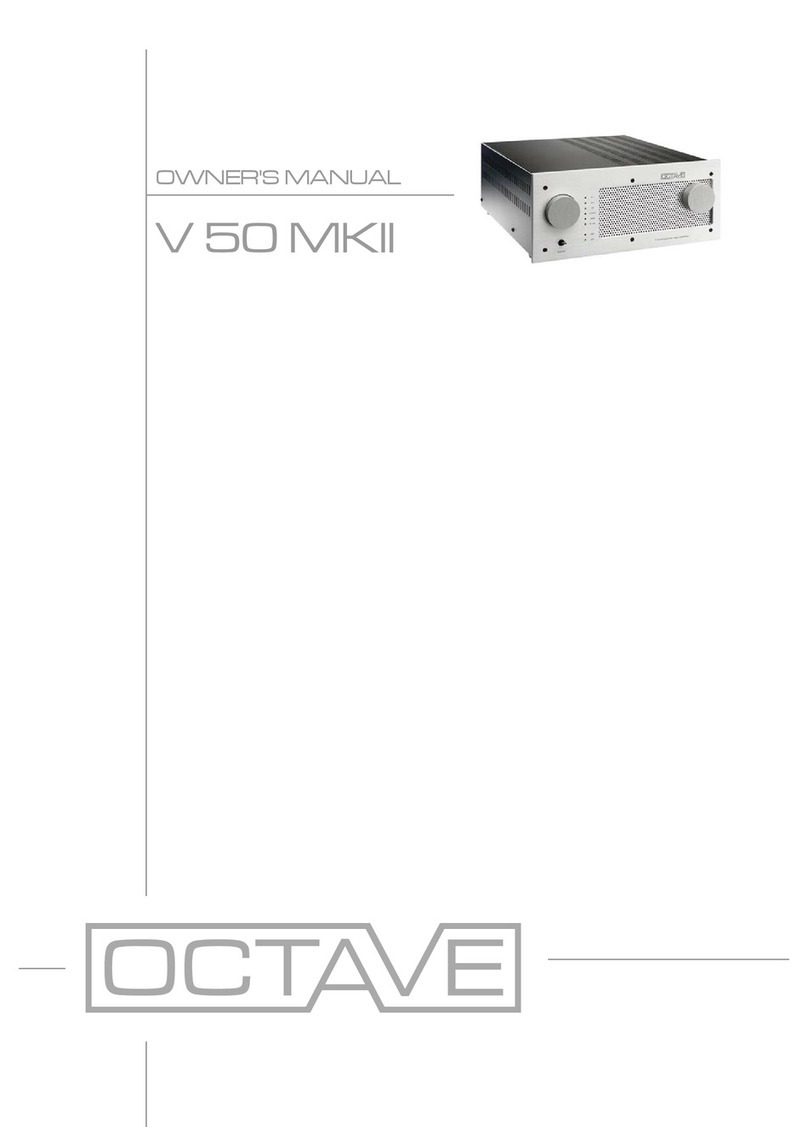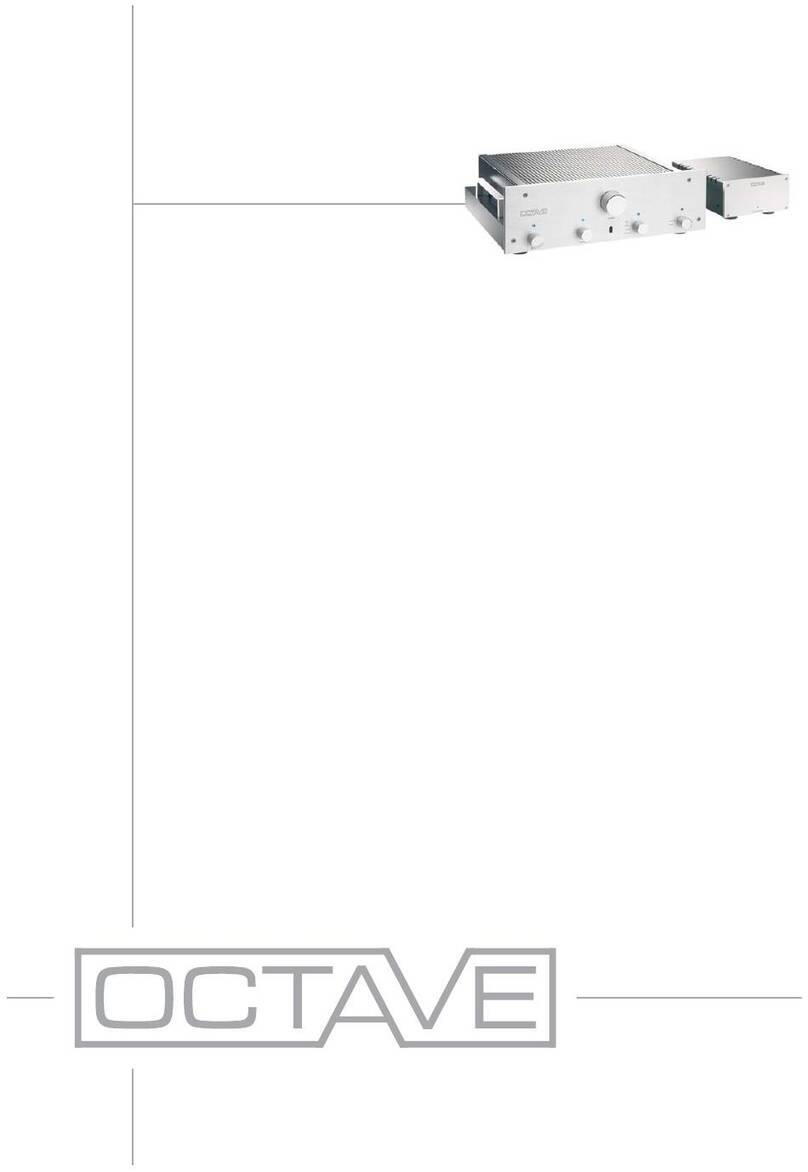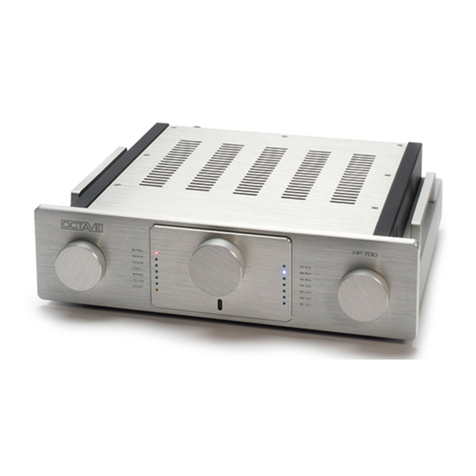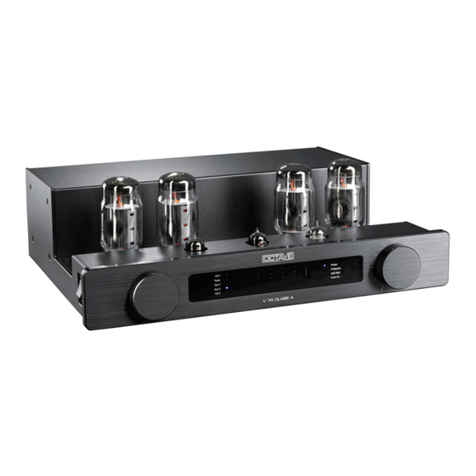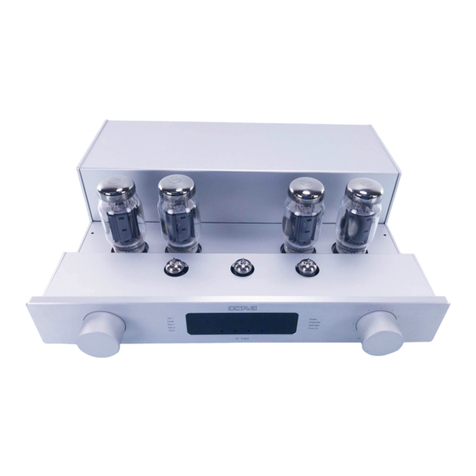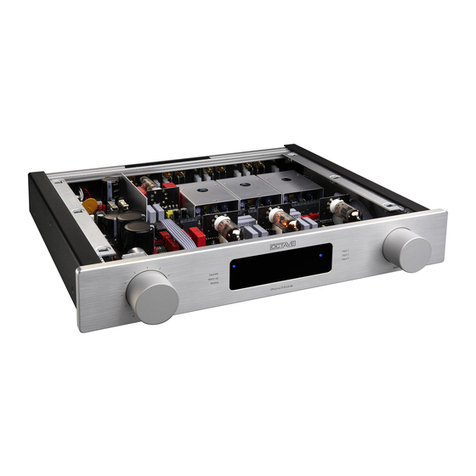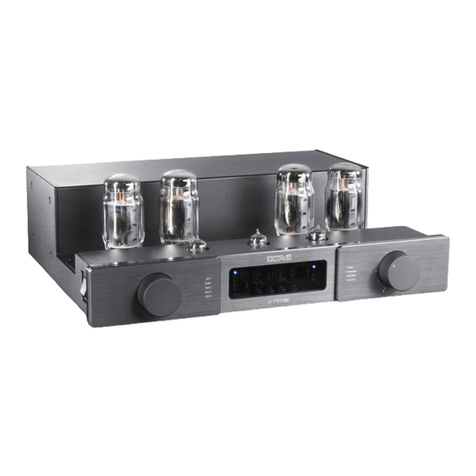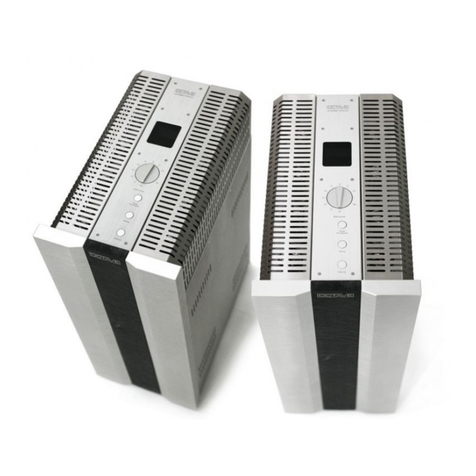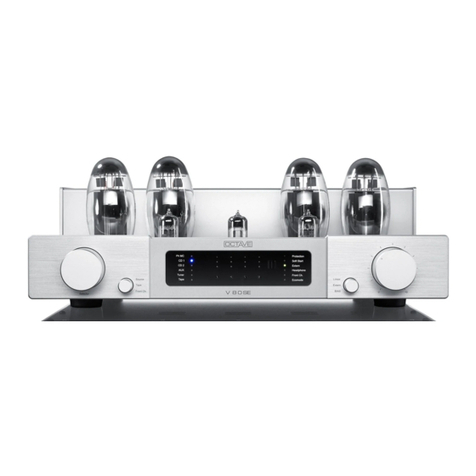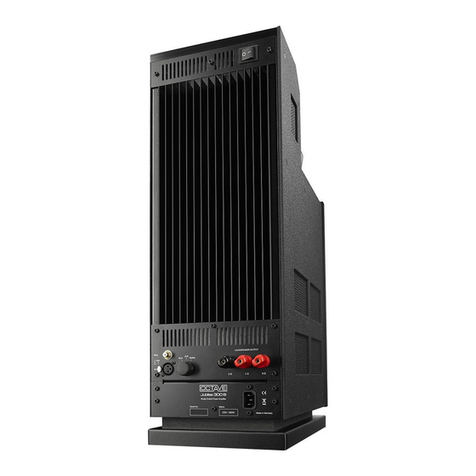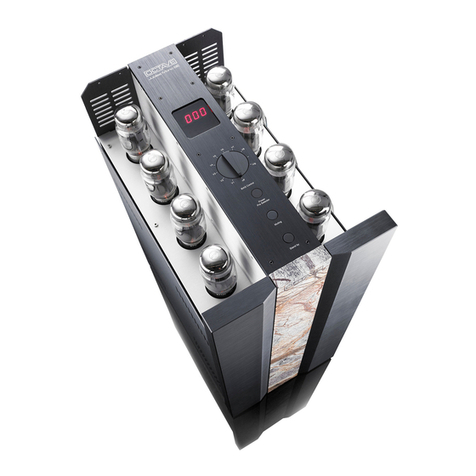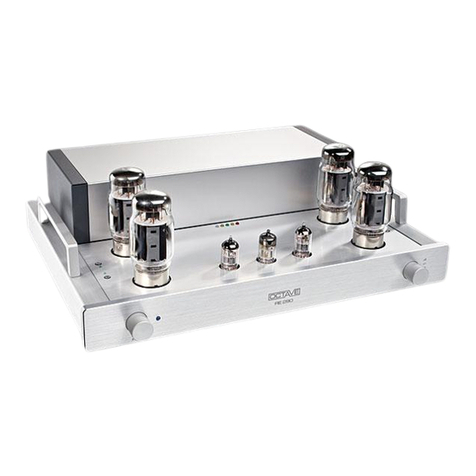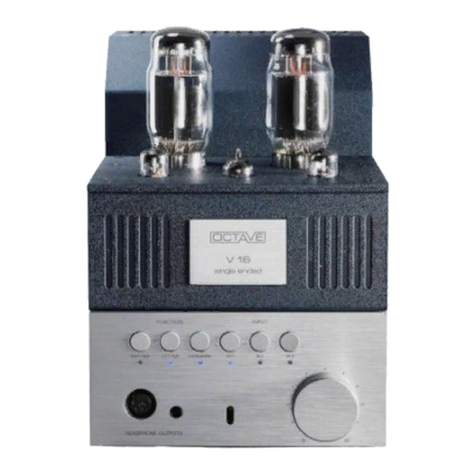7
1. OCTAVE TECHNOLOGY
1.2. Description HP 300 MK2 MKII
The HP 300 MK2 MKII is a member of a new generation of tube preamplifiers built by
OCTAVE. The first model of this line was the reference preamplifier Jubilee. Heart of this line
is a newly developed circuit design, which still has the tube as the central amplifying
component, but the necessary output power is generated by a new type of super-gain
semiconductor circuit.
As OCTACE decouples the output load from the tubes, the HP 300 MK2 convinces with
excellent measuring results. Free from the output load the tubes can develop their tonal and
dynamic sound characteristics unrestrained. It sounds vivid, relaxed, totally free or with one
single word – simply light.
Because of that, the HP 300 MK2 preamplifier can be used extremely universal.
Furthermore, the HP 300 MK2 is manufactured perfectly, which also finds expression in the
stable, low resonance solid-metal chassis. Resonances are thereby ruled out. The solid
connecting sockets allow the connection of high-quality NF-wires with large plugs.
Every product of OCTAVE is built in Germany in single-piece production and is subject to a
100% check. A 48-hour endurance run completes the final inspection.
Over and above that the HP 300 MK2 uses a lavish special power supply, which was
developed especially for the HP 300 MK2.
The power supply of the HP 300 MK2 carries out complex functions: On the one hand it
ensures a constant acoustic quality by preventing mains disturbances and by creating constant
working conditions with electronic voltage stabilizations. On the other hand the built-in control
logic guarantees highest reliability and achieves with soft-start-techniques the theoretically
maximal possible lifetime of the tubes (up to approximately 10 Years or more).
An additional function of the power supply is the protection circuit, which releases the output of
the HP 300 MK2 by a relay with a time delay or disconnects it immediately in case of a
malfunction. Click-interferences etc. caused by the power supply are therefore absolutely ruled
out.
Transformers are individually designed and produced in our own house.
The bypass / multi channel facility makes the HP 300 MK2 to one of the most versatile
preamps in this range. This technology is possible throughout a logic controlled input section.
The switching elements are high quality industrial grade gold contact relays.

